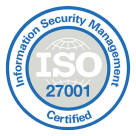
ISDN (Integrated Services Digital Network) revolutionized telecommunications by enabling fast, reliable voice and data transmission over traditional phone lines. Now, businesses must decide how ISDN stacks up against newer technologies like VoIP (Voice over Internet Protocol).
This raises the question: Is ISDN still relevant?
In this article, we explore the basics of ISDN, its advantages, and its relevance alongside other alternatives so that you can choose your communication options wisely.
Key Takeaways:
- ISDN (Integrated Services Digital Network) is a digital telephone system that allows voice, video, and data transmission over traditional copper telephone lines.
- ISDN has historically provided reliable, clear, and fast communication. However, it is costly to install and maintain and has limited bandwidth and flexibility.
- Businesses and individuals can switch to VoIP for more cost-effective, flexible, and scalable communication solutions, as it doesn’t require extensive physical infrastructure and offers advanced features that boost productivity.
What Is ISDN?
ISDN stands for Integrated Services Digital Network, which is an advanced telephone system that transmits voice and data over digital lines.
Additionally, it sets standards for transmitting voice, video, and data over the public telephone network.
This technology allows companies to connect with employees worldwide through high-quality telephone lines, promoting remote collaboration.
One example of its use is ISDN modems, which connect computers to the ISDN network and enable faster connections than regular modems, especially in areas with limited broadband connectivity.
Although it was the first high-speed internet service, it has been replaced by more modern technologies like VoIP, which only requires an Internet connection.
Differences Between ISDN and Traditional Phone Systems
The traditional telephone network, known as the Public Switched Telephone Network (PSTN) or Plain Old Telephone Service (POTS), is a system that allows us to make and receive phone calls globally.
This network uses traditional technology to connect calls via telephone poles and wires distributed everywhere.
But what are the differences between PSTN and ISDN?
Let’s explore them:
Feature
PSDN
ISDN
Technology
Uses analog technology.
Uses digital technology, clearer calls, and less susceptible to interference.
Speed
Slower data transfer.
Faster data transfer, ideal for video conferencing and multimedia messages.
Flexibility
Requires separate lines for voice and data.
Handles voice and data simultaneously on a single line.
Availability
Widely available.
May not be available in rural areas.
Bandwidth
Transmits fewer data per second.
Transmits more data per second, suitable for various applications.
Cost
Generally more economical.
Can be more costly to install and maintain.
Quality of service
Less reliable signal.
More reliable and consistent signal.
Automate your calling process with VoIP
How Does ISDN Work
ISDN allows the transmission of voice, data, and other services over traditional copper telephone lines.
While analog systems send these signals in the form of continuous waves, ISDN phone systems transform these analog signals into digital lines.
How does it do this? Dividing the telephone line into several digital channels allows multiple and simultaneous connections on a single line.
Imagine the telephone network as a highway with different types of lanes. These would be the digital channels into which ISDN divides the telephone line:
- B Channels (Bearer): These would be like the main lanes. They carry the most important information, such as phone calls or internet data.
- D Channels (Delta): These would be like the lanes used for maintenance. They are used for signaling and communication control, ensuring that calls connect and end correctly. In short, they make sure everything works properly.
In summary, the B channels carry the main information we want to send or receive, while the D channels ensure the network operates smoothly, coordinating and controlling communications.
Types of ISDN
There are 2 main types of ISDN configurations: Basic Rate Interface (BRI) and Primary Rate Interface (PRI).
Let’s look at the differences in this table:
Feature
Basic Rate Interface (BRI)
Primary Rate Interface (PRI)
What it is
Basic and affordable option for connecting to the ISDN network.
More advanced and powerful option for connecting to the ISDN network.
Channels
It has two B channels (for voice or data) and one D channel (for control).
In North America, it has 23 B channels (for voice or data) and one D channel (for control). In Europe, it has 30 B channels and one D channel.
Ideal for
Homes, small businesses, and remote offices.
Large enterprises and organizations with significant communication needs.
Common applications
Voice calls, internet access, and fax transmission.
Simultaneous voice and data communications, such as in call centers, universities, and large corporations.
Advantages
Simple and cheap.
Offers more channels, meaning more capacity for simultaneous calls and data. It also includes advanced features like Direct Inward Dialing (DID) and Caller ID.
Limitations
Not suitable for large enterprises because it has limited bandwidth.
More expensive and requires specialized equipment.
Why is ISDN Important?
While ISDN (Integrated Services Digital Network) was created in the late 1970s, the first ISDN service was launched in the 1990s.
ISDN (Integrated Services Digital Network) transformed technology and communication for several reasons:
- Provided faster connection speeds: ISDN offered speeds up to 128 kbps, much faster than traditional analog phone lines. This made it ideal for businesses needing quick data transfers and reliable voice calls.
- Improved communication clarity: ISDN’s digital signals made voice transmissions clearer and reduced noise, distortion, and echoes during calls. It improved communication quality for businesses, helping them maintain high call standards from any location.
- Supported multiple services: ISDN could handle voice, fax, and internet access through one line, making it a great solution for businesses needing to manage various communication channels.
- Enabled business applications: ISDN allowed businesses to participate in video conferences and other applications, making it a valuable tool.
These benefits made ISDN a crucial technology for businesses, especially during the shift from analog to digital communication systems.
Advantages and Disadvantages of ISDN
Advantages
Apart from the advantages discussed in the previous section, ISDN offers the following benefits:
- Ensure reliability: Built-in error detection and correction mechanisms guarantee data integrity and minimize interruptions.
- Scale easily: Users can increase or decrease the number of B channels (which carry the main information, such as phone calls or internet data) to adapt to changing demands, making it suitable for businesses of all sizes.
- Guarantee security: ISDN provides a range of security features, including encryption and authentication, which protect companies handling sensitive information.
- Communicate globally: ISDN connects different networks across many countries, making it a reliable option for international communication.
Disadvantages
Although ISDN offered and continues to offer significant advantages, it has certain limitations:
- Costs more: Setting up and maintaining an ISDN line costs more than newer digital communication systems. You will face initial setup costs, equipment expenses, and ongoing service fees, making it less affordable, especially for small businesses.
- Depends on physical cables: Installing and configuring ISDN cables can be time-consuming and frustrating for your business. The system is also more prone to failures compared to newer technologies that do not rely on physical cables.
- Limits the speed: ISDN provides dedicated channels with a speed of 64 Kbps, which is low compared to current broadband technologies. This limited speed might be problematic for data-intensive applications, such as high-definition video streaming.
- Restricts flexibility: ISDN phone systems typically require physical wires for connection and have fixed configurations and capacities, making them less adaptable to your changing network needs.
Limits your geographic area code: ISDN connections are tied to a specific geographic area code, and making changes can take several weeks. Your business may be limited in phone numbers as they are tied to your geographic location.
Level up your team’s efficiency with VoIP telephony software.
ISDN Alternatives
As technology advances and internet use increases, ISDN can no longer meet the demands for faster data transmission, better service quality, and lower costs.
Let’s explore the main alternatives.
VoIP (Voice over Internet Protocol)
Definition
VoIP stands for Voice over Internet Protocol and is one of the most popular hosted telephony systems as an alternative to ISDN.
It converts your voice into digital signals and transfers them to the other person(s) on the call. It’s like a regular call, but it uses the Internet instead of cables.
Benefits
The main advantages of VoIP (Voice over Internet Protocol) technology are as follows:
- Save money: VoIP reduces hardware costs by eliminating the need for equipment and dedicated telephone lines. You only need a mobile phone or a laptop with a reliable Internet connection. The price of VoIP calls is typically more affordable than traditional ones, especially for international calls.
- Work from anywhere: As long as you have an Internet connection and your computer, smartphone, or tablet, you can make and receive calls from any location, enhancing your mobility and facilitating remote work.
- Enjoy advanced features: VoIP offers a wide range of advanced features, including Voicemail, Caller ID, and Call Recording. You can integrate it seamlessly with other communication services like WhatsApp and SMS, as well as your favorite tools and CRM systems.
- Scale easily: With VoIP, you can easily add or remove lines as needed without requiring additional physical installations. This flexibility is perfect for growing your business or adjusting your communication infrastructure dynamically.
- Expand globally: VoIP allows you to obtain local and international numbers without needing to be physically present in the country. This is especially beneficial if you have international clients, letting you easily grow internationally.
Ideal For
VoIP is ideal for distributed teams, customer-facing businesses, small businesses, solopreneurs, growing businesses, and remote work environments due to its cost-effectiveness, scalability, and advanced features.
SIP Trunking (Session Initiation Protocol Trunking)
Definition
SIP trunking is a modern technology that allows voice calls and multimedia to be transmitted over the internet instead of using traditional phone lines.
With SIP trunking, Voice over Internet Protocol (VoIP) calls can be connected between a local phone system and the public telephone network. Essentially, it converts multiple communication lines into a single connection, making communications easier and more efficient.
The main difference between SIP trunking and VoIP is that SIP trunking is a method of connecting an IP PBX phone system to the internet and PSTN to enable VoIP calling, while VoIP is the technology that allows voice calls to be made over the internet
Benefits
SIP trunking offers similar advantages to VoIP, such as cost savings, flexibility, and scalability. In addition:
- Achieve greater reliability than ISDN: SIP trunking provides greater reliability because if one route fails, voice traffic can be automatically redirected through another route, improving service continuity. In contrast, ISDN relies on specific physical lines. If a line or central office fails, your service can be severely affected without quick recovery options.
- Gain more control and management: SIP trunking allows for remote administration and configuration, making maintenance and troubleshooting easier. On the other hand, ISDN requires technical intervention to resolve issues, which can increase downtime.
Ideal For
It’s ideal for larger businesses, call centers, multi-site businesses, and remote workers due to its scalability and advanced features. Small businesses also gain from its cost-effectiveness and easy integration with existing equipment.
Fibre To The Premises (FTTP)
Definition
FTTP stands for “Fiber to the Premises,” which is a type of high-speed internet service that uses fiber optic cables to connect directly from the user’s premises to the central office of an Internet Service Provider (ISP).
This technology avoids the use of traditional copper cables, providing faster and more reliable internet connectivity.
Benefits
- Ensure a more secure connection: Fibre optic cables are less susceptible to environmental factors like temperature fluctuations, rain, and electrical interference, which can cause signal degradation and instability in copper cables.
- Gain exceptional speeds: With maximum download capabilities reaching up to 1 Gbps (gigabit per second), it makes it idealfor applications like cloud computing and video conferencing.
- Scale easily: FTTP allows you to adjust speed to meet your requirements, providing an ideal solution for businesses and individuals with changing internet needs.
- Install it faster: FTTP setup requires significant infrastructure investments but eliminates the need for copper cables. This results in faster and more consistent speeds.
Ideal For
FTTP is ideal for businesses that require high-speed, reliable, and secure internet connections, particularly those with bandwidth-intensive applications, remote locations, and growing needs.
Conclusion
In conclusion, ISDN (Integrated Services Digital Network) has been a significant advancement in telecommunications, providing faster and clearer voice and data transmission over digital lines.
It has allowed companies to connect globally with high-quality connections, facilitating remote collaboration
However, ISDN has been replaced by modern technologies like VoIP, which are more cost-effective, flexible, and require only an internet connection.
















